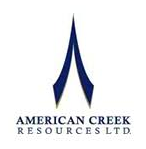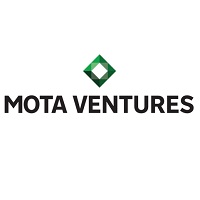
SPONSOR: American Creek owns a 20% Carried Interest to Production at the Treaty Creek Project in the Golden Triangle. 2019’s first hole averaged of 0.683 g/t Au over 780m in a vertical intercept. The Treaty Creek property is located in the same hydrothermal system as the Pretivm and Seabridge’s KSM deposits. Click Here For More Info
Credit Deflation and Gold
Gold and precious metals mining shares are casualties of panic selling across all financial markets. The scenario is similar to what happened in 2008 during the global financial crisis (GFC). When the general selling exhausted itself in late 2008, gold and mining shares delivered superior absolute and relative performance for the following three years. We believe that this pattern is likely to repeat following this sell-off.
While COVID-19 outbreak is grabbing the headlines, the far bigger story is the deflation of financial assets that it has triggered and the resulting loss of investment confidence. Markets that had been priced for perfection must now reckon with a likely recession, soaring fiscal deficits and the very real possibility of a sustained bear market.

In our opinion, even though the economy will recover from the downturn and the health scare will prove to be temporary, financial asset valuations are unlikely to return to pre-crash manic levels. In mid-February, the Wilshire 5000 Stock Index1 traded at approximately 145% to gross domestic product (GDP),2 its second highest level since 1950, and only slightly below the 2000 peak (see Figure 1). At this writing, the ratio has fallen to 114% (as of 3/17/2020), which is still very expensive by historical standards. Valuations are driven by investor psychology, leverage and the liquidity necessary to support leverage. All three may have been critically impaired for the near to intermediate term.
Figure 1. Total U.S. Corporate Equities and U.S. GDP (1950-2020)

Source: AdvisorPerspectives.com. Data as of 3/3/2020.
Gold Will Continue to Do its Job
If financial assets struggle, interest in gold is very likely to widen. Gold may have been caught up in the recent stampede for liquidity, but it has delivered good relative performance on a year-to-date basis; gold bullion is up 0.73% as of March 17, compared to -25.17% for the S&P 500 Index.3 The 12-month figures (as of 3/17/2020) are even more impressive: gold has returned 17.19% vs. -8.54% for the S&P 500.
On a peak-to-trough basis for the last few weeks, gold has declined roughly 12%. Other safe haven assets have experienced the same pressure. For example, the yield on 30-year U.S. Treasury bond rose from less than 1.0% to 1.5% in only a few days, a drawdown of more than 30%. What this shows is that quality assets will be sold by portfolio managers desperate to reduce leverage. Low-grade assets cannot be sold quickly enough to meet margin calls.
It was leverage that inflated valuations, not fundamental economic growth and strong year-over-year earnings. In fact, corporate pre-tax profits have been declining since Q3 2014. Figure 2 shows pretax profits on a quarterly basis since 2014.
Figure 2. U.S. Corporate Pre-Tax Profits Have Been Declining ($Billions)

Source: Federal Reserve Bank of St. Louis Economic Research. Data as of 3/16/2020.
The illusion of earnings growth that has captivated investor psychology was achieved through share buybacks and increased leverage. Growth of earnings per share, not the same as profit growth, has been juiced by financial engineering. The same can be said for returns on financial assets. The amount and location of leverage within the economy and financial markets is opaque but may well have reached high tide for many years. A post-recession economic recovery will not necessarily, and does not have to, translate into strong returns from investing in financial assets.
Global Debt Has Increased +100% Since 2007
In popular thinking, the current U.S. administration, or the one that follows it, will pull every trick out of the bag to stimulate the economy. This belief will likely excite investors from time to time in anticipation of a rebound. Unfortunately, the financial markets are experiencing a deflationary bust that could spread to general economic activity. Public policy has all but exhausted the potential benefits of resorting to traditional monetary and fiscal solutions. The marginal benefit to economic growth from heaping on new layers of debt is capped by the law of diminishing returns, as shown by Figure 4 from Rosenberg Economics. Since 2007, global debt increased 110% vs. 46% for global GDP:
Figure 3. Global Debt vs. Global GDP ($ Trillions)

Source: Rosenberg Economics. Data as of 12/31/2019.
Central banks have few conventional tools remaining to combat credit deflation. An impotent response can be expected from new rounds of monetary stimulus, rate reductions or central bank balance sheet expansion. Global debt, public and private, measures 287% vs. global GDP ($244 trillion divided by $85 trillion). The debt burden will most assuredly grow, a post coronavirus rebound notwithstanding. The world’s debt structure is already incapable of withstanding even a minute rise in rates. More debt relative to GDP will only make matters worse. All that remains is currency destruction.
Gold has been rising for the past eighteen months side by side with a strong stock market and no inflation. Conventional wisdom said that wasn’t supposed to happen. As shown in Figure 4, gold has outperformed equities and bonds since 2000, the dawn of radical monetary experimentation by central bankers. We think gold has been sensing the endgame for Keynesian policy prescriptions, mainstream economic thinking and hyper-leveraged investment practices.
Figure 4. The Modern Era of Gold
Gold Bullion vs. Stocks, Bonds, Oil, USD (2000-2020)
For the period from 12/31/1999 to 3/16/2020, gold has provided posted an average annual return of 8.55%, compared to 5.44% for U.S. bonds, 4.44% for U.S. stocks, 0.57% for oil and -0.19% for the U.S. dollar.

Source: Bloomberg. Period from 12/31/1999 –3/16/2020.4
Gold Miners are Poised to Perform
During the 1930s credit deflation, gold and gold mining stocks performed well in relative and absolute terms. When credit deflates, and counterparties cannot be trusted, gold is the ultimate safe asset. In the 1930s, the metal price rose, costs of producing gold declined and the miners generated strong earnings and paid handsome dividends. We believe that this is a sequence that will repeat.
At the moment, mining company valuations appear extraordinarily cheap. It is one of the few industries that will report solid year-over-year earnings gains for the remainder of this year and perhaps into the next.
Buying low is never easy but now is the time to do it.
https://sprott.com/insights/sprott-gold-report-point-of-no-return/?





















